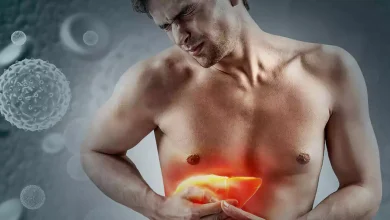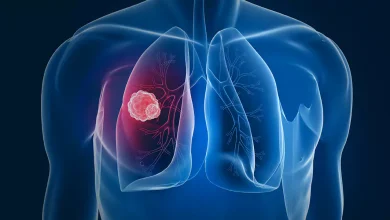What is Bone Tumor?

Bone tumor occurs when cells divide uncontrollably and abnormally, causing the formation of a mass or lump of tissue. This lump is known as a tumor. Bone tumors develop in your bones. As the tumor grows, healthy tissue might be replaced by abnormal tissue. Bone tumors can either be benign (non-cancerous) or malignant (cancerous).
Benign tumors aren’t cancerous and these tumors usually form in a certain place and are unlikely to be life-threatening, they’re still abnormal cells and may need treatment. Benign tumors can grow and can compress your healthy bone tissue causing future complications. If you have a benign bone tumor, you might still require treatment to decrease the risk of other complications including joint problems, weak bones, and damage to healthy bone tissue.
Malignant tumors are cancerous and can cause cancer to spread throughout the body.
What are the Types of Bone Tumors?
Bone tumors can be either benign (non-cancerous) or malignant (cancerous) and there are types under both categories.
Types of benign bone tumors include:
– Osteochondromas
Benign tumors are more common than malignant ones and the most common type of benign bone tumor is osteochondroma which comprises 35 and 40 percent of all benign bone tumors. Osteochondromas mostly occurs among teenagers and adolescents. These tumors develop near the actively growing ends of long bones, like the arms or leg bones, and are made of bone and cartilage.
– Nonossifying fibroma unicameral
Nonossifying fibroma unicameral is a simple solitary bone cyst. It generally develops in the leg and happens mostly in children and adolescents.
– Giant cell tumors
Giant cell tumors occur in adults and they develop aggressively. These tumors mostly occur in the rounded end of the bone and not in the growth plate. These tumors are rare kind of tumors.
– Enchondroma
It is a cartilage cyst that develops inside the bone marrow. When these tumors occur, they start in children and continue till adulthood. They are part of syndromes known as Ollier’s and Mafucci’s syndrome. Enchondromas occur in the hands and feet along with the long bones of the arm and thigh.
– Fibrous dysplasia
Fibrous dysplasia is a gene mutation. It makes bones weak and susceptible to fractures.
Types of malignant bone tumors include:
– Osteosarcoma
Osteosarcoma is the most common type of bone cancer where the cancerous cells produce bone. This type of bone cancer mostly occurs among children and young adults, in the bones of the leg or arm.
– Chondrosarcoma
Chondrosarcoma is the second most common type of bone cancer where the cancerous cells produce cartilage. Chondrosarcoma generally develops in the pelvis, arms, or legs among middle-aged and older adults.
– Ewing sarcoma
Ewing sarcoma tumors mostly occur in the pelvis, legs, or arms among children and young adults.
What are the Symptoms of Bone Tumor?
– Bone ache
– Swelling and tenderness in the affected area
– Weakened bone, causing fractures
– Fatigue
– Unexplained weight loss
What are the Causes of Bone Tumors?
Researchers are not sure what exactly causes bone tumors, but they have found connections between bone tumors and other factors. The most important factor is getting exposed to radiation or medicines for the treatment of other cancers. Some bone tumors develop because of a family history of cancer but it’s not necessary that if you have a family history of cancer then you will get bone tumor. Injuries are also linked with the triggering of bone tumors.
What are the Risk Factors for Bone Tumors?
The risk factors of bone tumor include-
-Inherited genetic syndromes
Some rare genetic syndromes are passed through families which increase the risk of bone tumors, along with Li-Fraumeni syndrome and hereditary retinoblastoma.
– Paget’s disease of bone
Paget’s disease of bone is a bone-related disease that mostly occurs among older adults and it can increase the risk of bone tumor.
-Radiation therapy for cancer
Getting exposed to large amounts of radiation, like those given during radiation therapy for cancer, increases the risk of bone tumors in the future.
What are the Complications of Bone Tumors?
Complications of bone tumor or its treatment include:
– Infection.
– Bleeding due to surgery.
– Complications post limb-salvage surgery.
– Problems because of chemotherapy such as hair loss, nausea, mouth sores, diarrhea, vomiting, easy bruising and bleeding, and fatigue.
– Problems because of radiation therapy such as hair loss, burns, nausea, poor bone growth, diarrhea, organ damage, and new cancers
– Emotional and physical issues after amputation.
– Problems in the heart and lungs.
– Growth and development problems.
– Learning problems.
– Complications in sexual development.
– Fertility problems.
– Return and growth of other cancers.
How Brain Tumors are Diagnosed?
To make sure you have a bone tumor, your doctor may prescribe a range of tests because fractures, infections, and other conditions may resemble tumors.
At first, your doctor will do a physical exam that will focus on the area of your suspected tumor. The doctor will check the tenderness in your bone and test your range of motion. Your doctor will also ask you questions about your family history related to tumors and cancer.
The tests to diagnose brain tumors include:
– Blood and urine tests
Your blood or urine samples will be taken and sent to a lab to examine various proteins that might indicate the presence of a tumor or other medical complications.
An alkaline phosphatase test is one common test doctors use to diagnose bone tumors. When your bone tissue is especially active to develop cells, huge amounts of this enzyme are present in your blood. This might be because your bone is growing, especially in young people, or it could indicate a tumor is creating abnormal bone tissue. This test is more reliable in adults whose bones stopped growing.
– Imaging tests
Your doctor might prescribe X-rays to detect the size and exact location of the tumor. Based on the X-ray results, these other imaging tests may be needed:
. A CT scan is a series of detailed X-rays of the inside of your body taken from different angles.
. Magnets and radio waves are used in MRI to take detailed pictures of the areas indicating tumors.
. During the positron emission tomography (PET) scan, a small amount of radioactive sugar will be injected into your vein and because cancer cells use more glucose than regular cells, this activity helps your doctor find the exact location of the tumor.
. An arteriogram takes an X-ray of your arteries and veins.
. A bone scan might be needed to check how they’re done and what the results mean.
– Biopsies
During a biopsy, your doctor will take a sample of the tissue that makes up your tumor and will be examined in a laboratory under a microscope. The main types of biopsies include needle biopsy and an incisional biopsy which helps to detect tumors and their locations.
What are the Treatment Options Available for Brain Tumors?
The treatment options for brain tumors include:
– Surgery
It’s the most common treatment for brain tumors where a surgeon will remove the tumor and some healthy tissue from the affected location. It also helps to repair or rebuild the affected bones by using real or artificial bone grafts. In some instances, the entire limb is removed to stop the growth of the tumor, and an artificial limb (prosthetic) is attached. If all of the cancer cells are not removed in the first surgery then repeat surgery may be required.
– Radiation therapy
Radiation therapy is usually done before surgery where the affected areas are exposed to radiation beams. It shrinks the tumor so that less tissue has to be removed.
– Chemotherapy
During chemotherapy, strong medicines are given to kill cancer cells throughout the body. The medicines are usually taken orally or injected into a vein. Chemotherapy might have some side effects such as hair loss, nausea, fatigue, irritability, etc.
– Cryosurgery
Cryosurgery used liquid nitrogen to kill cancer by freezing them. During cryosurgery, a hollow tube is inserted into the tumor, and liquid nitrogen or argon gas is pumped in which further freezes and kills the cancer cells.
Living with Brain Tumor
You may feel overwhelmed after being diagnosed with a bone tumor because it can develop into bone cancer but it’s rare and brain tumor can be treated easily. Bone tumor can be either cancerous or non-cancerous and if it’s detected early, then they can be treated successfully and you can live a normal life without any complications. You can talk about the treatment options available after getting diagnosed with a bone tumor and start your treatment accordingly. You can share your feelings with your close friends and family members about what you are feeling and also join support groups where you will meet people with bone tumor and discuss various things with them.
Whom to Consult?
You shall consult with your doctor if you notice symptoms of bone tumor such as the appearance and disappearance of pain in certain bones, pain that worsens at night, and over-the-counter pain relievers are not helping anymore. The pain can be throbbing, aching, or stabbing which is making it difficult for you to do your daily tasks. You might develop a lump in the area that may be hard or soft to touch if you have a bone tumor and in such instances, medical assistance is quite important.






